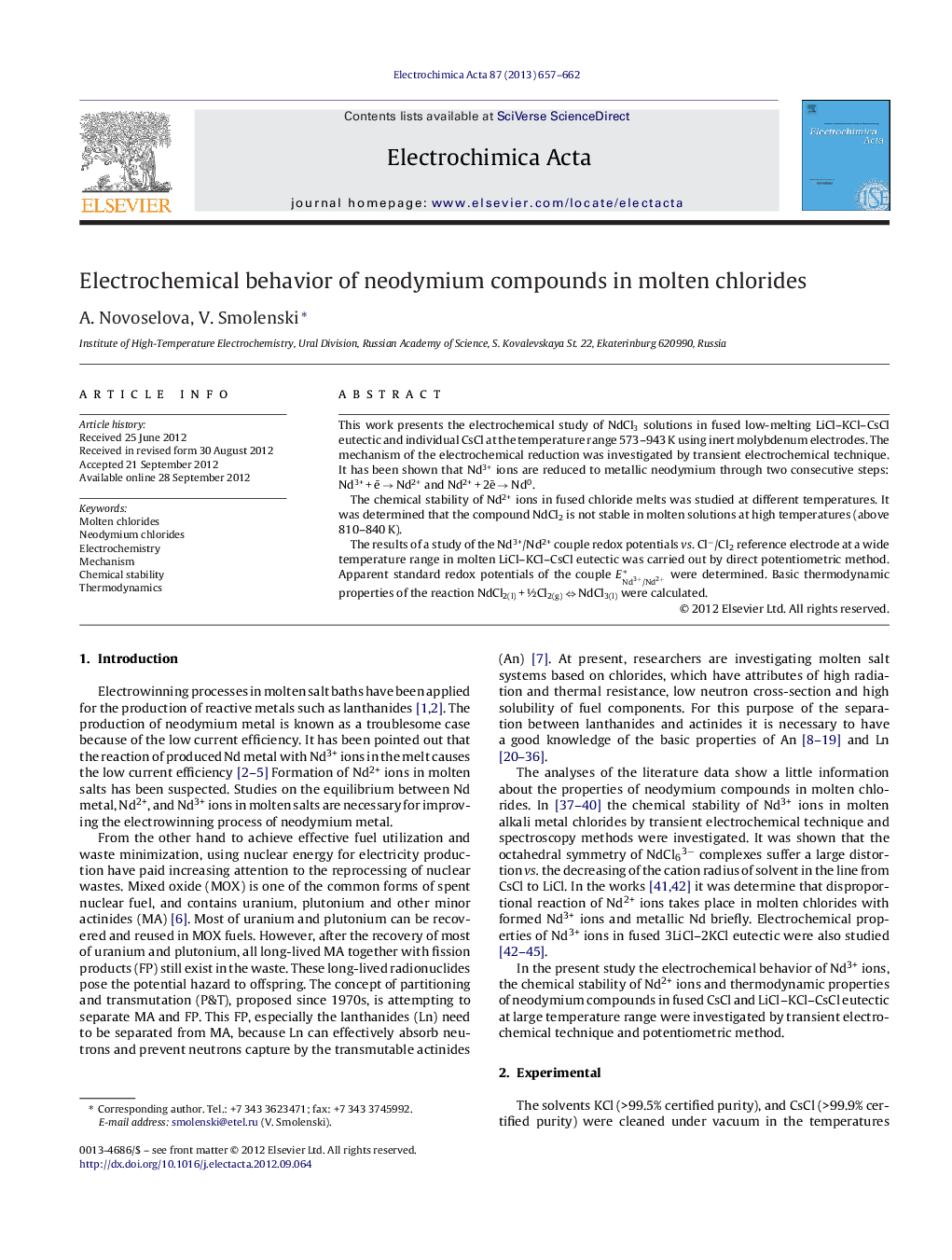| Article ID | Journal | Published Year | Pages | File Type |
|---|---|---|---|---|
| 188037 | Electrochimica Acta | 2013 | 6 Pages |
This work presents the electrochemical study of NdCl3 solutions in fused low-melting LiCl–KCl–CsCl eutectic and individual CsCl at the temperature range 573–943 K using inert molybdenum electrodes. The mechanism of the electrochemical reduction was investigated by transient electrochemical technique. It has been shown that Nd3+ ions are reduced to metallic neodymium through two consecutive steps: Nd3+ + ē → Nd2+ and Nd2+ + 2ē → Nd0.The chemical stability of Nd2+ ions in fused chloride melts was studied at different temperatures. It was determined that the compound NdCl2 is not stable in molten solutions at high temperatures (above 810–840 K).The results of a study of the Nd3+/Nd2+ couple redox potentials vs. Cl−/Cl2 reference electrode at a wide temperature range in molten LiCl–KCl–CsCl eutectic was carried out by direct potentiometric method. Apparent standard redox potentials of the couple ENd3+/Nd2+* were determined. Basic thermodynamic properties of the reaction NdCl2(l) + ½Cl2(g) ⇔ NdCl3(l) were calculated.
► Neodymium chloride compounds as fission products. ► The investigation of electrochemical properties of neodymium ions in molten chlorides. ► Definition of the mechanism of the electrode reactions. ► Study the chemical stability of neodymium compounds. ► Determination of the apparent standard redox potentials of the couple Nd3+/Nd2+ in fused LiCl–KCl–CsCl eutectic.
